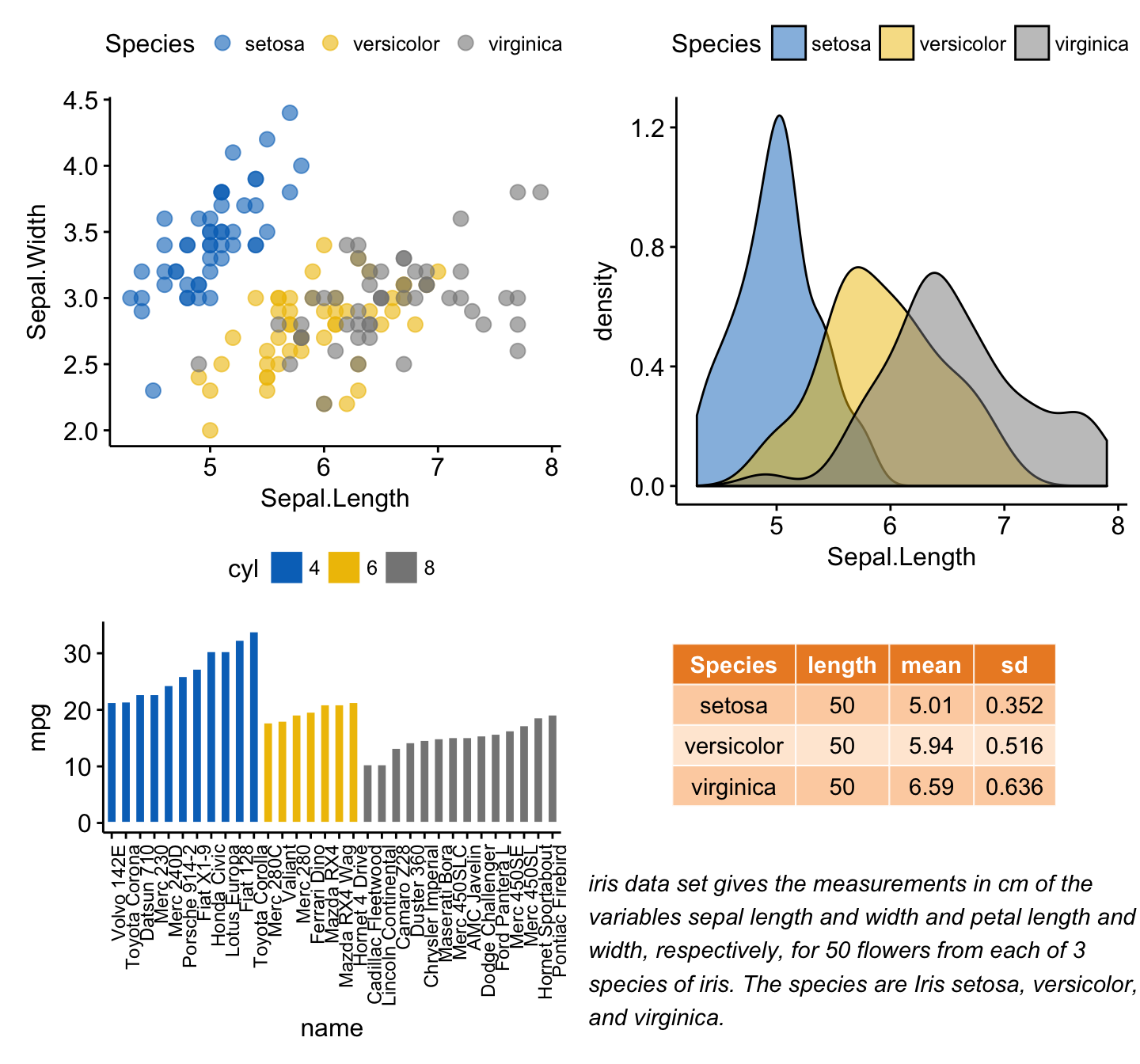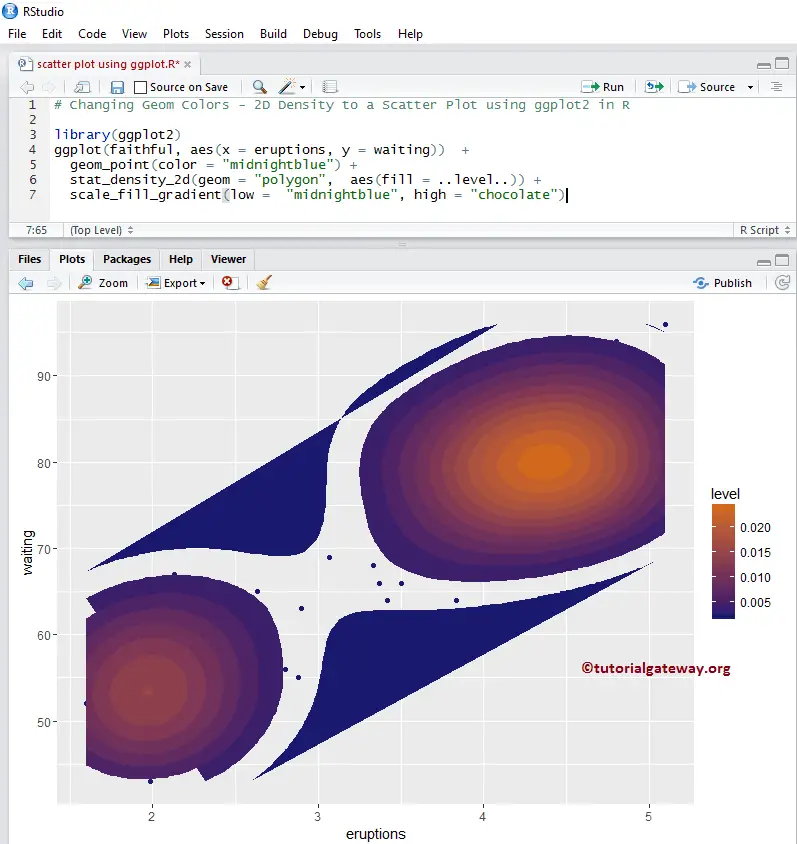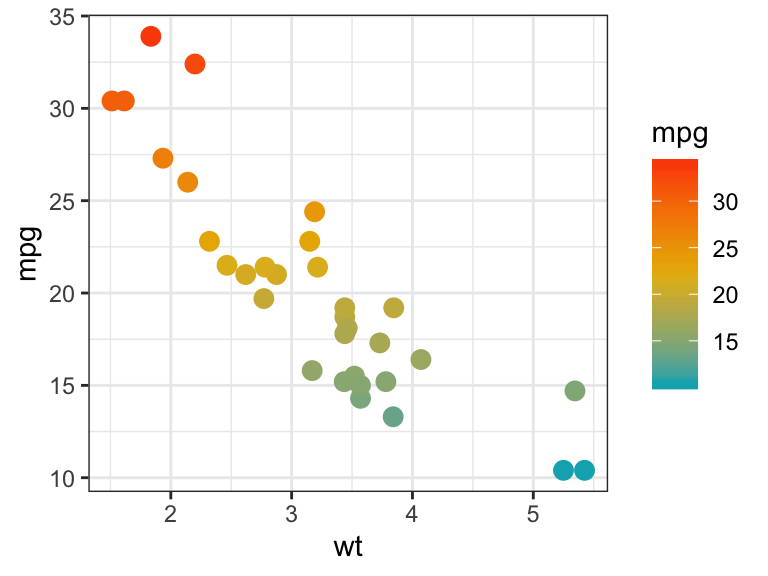

Geom_errorbar(aes(ymin = len, ymax = len+sd), width = 0.2) Geom_bar(stat = "identity", fill = "lightgray", color = "black") +

Geom_errorbar( aes(ymin = len-sd, ymax = len+sd),width = 0.2) + Basic line and bar plots with error bars.Summarise(sd = sd(len, na.rm = TRUE), len = mean(len)) Geom_col(aes(color = supp, fill = supp), position = position_dodge(0.8), width = 0.7) + Geom_col(aes(color = supp, fill = supp), position = position_stack()) + # Stacked bar plots of y = counts by x = cut, Lollipop chart: Lollipop is an alternative to bar charts when you have large data sets.Īes(x = rowname, xend = rowname, y = 0, yend = mpg),ĭf3 Mutate(rowname = factor(rowname, levels = rowname)) Geom_text(aes(label = mpg), nudge_y = 2) + # change fill color by groups and add text labels Ggplot(df, aes(x = reorder(rowname, mpg), y = mpg)) + Margin.params = list(fill = "Species", color = "black", size = 0.2) Iris, x = "Sepal.Length", y = "Sepal.Width",Ĭolor = "Species", size = 3, alpha = 0.6, # Grouped Scatter plot with marginal density plots Scale_size(range = c(0.5, 12)) # Adjust the range of points size Geom_point(aes(size = qsec), alpha = 0.5) + In a bubble chart, points size is controlled by a continuous variable, here qsec. Wherever there is more points overlap, the size of the circle gets bigger. The overlapping points are randomly jittered around their original position based on a threshold controlled by the width argument in the function `geom_jitter() Create jittered points to avoid overlap.Geom_encircle(data = circle.df, linetype = 2) Ggplot(iris, aes(Petal.Length, Petal.Width)) + The function stat_cor() is used to add the correlation coefficient. Basic scatter plot with correlation coefficient.This would likely be a terrible graph, but you could. You could have a geom_bar() for data1 and a geom_point() for data2 if you wanted to! If for some reason you wanted to plot error bars from data1 and data points from data2, you could do that also. Note that you can plot with multiple datasets for any other geom element too. This is because the first argument for many of the geom functions is the aesthetic mapping by default. Within each geom element, you specify the name of the dataset with the argument label data =. Again, the x and y values must be the same ( clarity and m). This dataset’s values are derived from the mean (average) price of diamonds for each clarity and cut category. The data from the dataset called data2 is colored in black. This data’s values calculate the mean (average) price of diamonds for each clarity (simply execute data1 or View(data1) to view the data).

In the above example, the data from the dataset called data1 is colored in blue for distinction. # graphing data points from 2 different datasets on one graph ggplot() + geom_point( data = data1, aes( x = clarity, y = m), color = "blue") + # must include argument label "data" geom_point( data = data2, aes( x = clarity, y = m)) Let’s see an example: # creating dataset #1ĭata1 % group_by(clarity) %>% summarize( m = mean(price))ĭata2 % group_by(clarity, cut) %>% summarize( m = mean(price)) One final note is that geom elements ( geom_point(), geom_line(), etc.) can plot data from two (or more) different datasets. 10.9.4 Centering and Bolding the Plot Title.7.4.1 Exercises (use practice dataset):.3.6.4 Using the Internet to Your Advantage.



 0 kommentar(er)
0 kommentar(er)
